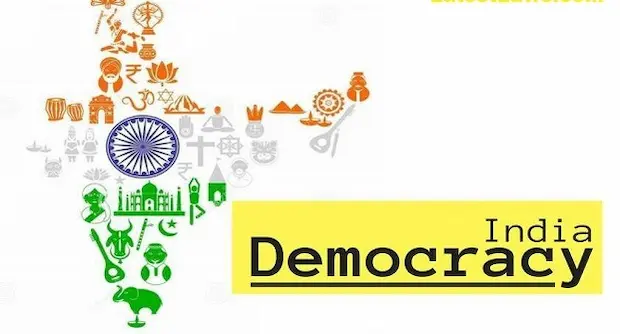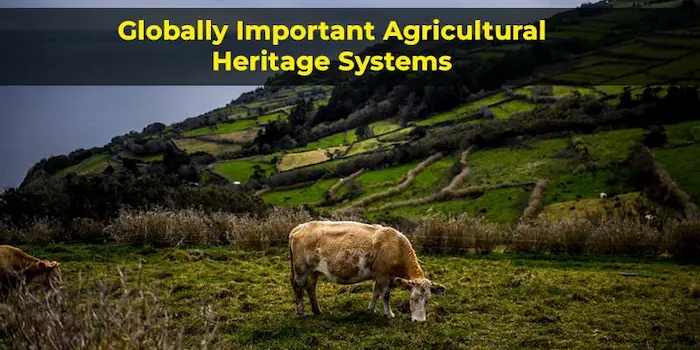1. Criminal Law, Politics, and the Misuse of State Power in India – Polity

Why in News?
The Government of India has proposed new constitutional provisions to remove Union and State Ministers — including the Prime Minister and Chief Ministers — from office upon arrest. This has sparked nationwide debates over:
- The politicization of investigative agencies
- Political corruption
- Need for criminal justice reform
Key Takeaways & Analysis
1. Nature of Criminal Law & State Power
- Criminal law in India is not just a tool for justice, but often reflects the coercive power of the State.
- Governments can criminalize or decriminalize acts based on political motives. Example: Use of sedition or anti-terror laws against dissenters.
2. Under-trials & Arrest Powers
- A majority of Indian prison inmates are under-trial prisoners.
- Reflects arbitrary or premature arrests often made without adequate evidence.
- Violates the principle of “innocent until proven guilty”.
- Broad powers under Section 41 of CrPC allow arrests on mere suspicion.
Implication: These practices disproportionately affect marginalized communities and dilute civil liberties.
3. Recent Proposals – Articles 75(5A) & 164(4A) (Proposed)
- Intended to mandate the removal of:
- Union Ministers (Article 75(5A))
- State Ministers (Article 164(4A))
- Upon arrest in criminal cases
- Aim: Promote accountability and remove tainted politicians from executive power.
Context: Currently, a person can remain a minister even if arrested or charge-sheeted, until convicted.
4. Criticism of Investigative Agencies
- Agencies like the CBI and ED have been criticized for:
- Acting on partisan instructions
- Selective targeting of political opposition
- Low conviction rates, raising doubts about fairness and efficacy
5. Vohra Committee Report (1993)
- Highlighted the criminal-politician-business nexus.
- Suggested the need for:
- Greater surveillance of political funding
- Stricter scrutiny of candidates with criminal records
Key Challenges
| Issue | Concern |
|---|---|
| Arrest powers | Overused, leading to mass under-trials |
| Agency autonomy | Lack of independence breeds bias |
| Low conviction rates | Reduces public trust |
| Political interference | Dilutes impartiality of law enforcement |
| Lack of judicial safeguards | Bail process remains slow and inconsistent |
Way Forward
To restore public trust and uphold constitutional morality, India needs to:
- Grant autonomy to investigative agencies through legal safeguards
- Reform bail laws to prevent arbitrary detention
- Strengthen the criminal justice system to focus on fairness, not political retribution
- Promote political consensus on ethical standards and disqualification norms
- Ensure transparent political funding to cut the root of corruption
Exam Connect – Possible Questions
Prelims
- Which of the following best describes the Vohra Committee Report?
A. It recommended reservations in the judiciary.
B. It examined the link between politicians, criminals, and business interests.
C. It proposed a new criminal code for India.
D. It dealt with reforms in the CBI.
Answer: B. It examined the link between politicians, criminals, and business interests. - Which article of the Indian Constitution deals with the appointment of the Prime Minister?
A. Article 74
B. Article 75
C. Article 76
D. Article 80
Answer: B. Article 75
- What does the high percentage of under-trial prisoners in Indian jails indicate?
A. Overcrowding due to rising crime rates
B. Efficient conviction processes
C. Overuse of arrest powers and delays in trial
D. Lenient bail provisions
Answer: C. Overuse of arrest powers and delays in trial
Mains
- “Criminal law in India is often a tool of state control rather than a means of delivering justice.” Examine this statement with reference to the misuse of investigative agencies and arrest powers.
- Discuss the implications of the proposed Articles 75(5A) and 164(4A) on ministerial accountability and democratic governance. What systemic reforms are necessary to balance state power and civil liberties?
- The Vohra Committee Report revealed deep-rooted structural issues in Indian politics. Evaluate its relevance in today’s context and suggest ways to break the politics-crime-business nexus.
2. Why India Needs a National Space Law – Science & Technology

Why in News?
India’s recent advancements in space — including lunar missions, the Gaganyaan project, and the proposed Bharat Antariksh Station — signal its ambitions to become a global space leader. However, the absence of a National Space Law poses regulatory and legal challenges, especially with rising private participation in the sector.
Key Takeaways
1. India’s Space Achievements
- ISRO’s consistent progress: Chandrayaan, Mars Orbiter Mission (Mangalyaan), and Gaganyaan (crewed mission).
- Upcoming: Bharat Antariksh Station, set to establish India’s permanent presence in space.
- Increasing role of private startups in space tech, satellite launches, and data services.
However, policy is lagging behind progress — there is no overarching law to regulate public and private space activities.
2. Why a National Space Law is Needed
a. Legal Clarity
- Currently governed by:
- IN-SPACe guidelines (Indian National Space Promotion and Authorization Centre)
- ISP 2023 (Indian Space Policy)
- But these are policy instruments, not laws — lack enforceability and legal accountability.
b. Private Sector Participation
- Startups face uncertainty around:
- Licensing procedures
- FDI regulations
- Liability and insurance
- Export controls and technology transfers
Example: Skyroot Aerospace and Agnikul Cosmos are Indian private firms pushing launch capabilities but face regulatory ambiguity.
c. International Obligations
- Under the Outer Space Treaty (1967):
- India is internationally liable for all space activities originating from its territory — including private players.
- Yet, no domestic legislation defines:
- Who is responsible if a private company causes damage
- How liability or insurance is to be handled
3. Global Comparisons
| Country | Key Legal Framework | Features |
|---|---|---|
| USA | Commercial Space Launch Act (CSLA) | Clear licensing, liability caps, investor-friendly |
| Japan | Space Activities Act | Government accountability, IP protection |
| Luxembourg | Space Resources Act | Rights over extracted space resources, encourages mining firms |
These frameworks attract investment, protect innovation, and ensure international compliance.
4. India’s Incremental Approach
- Focus on regulatory preparation first:
- IN-SPACe Norms (2020): Promotes and authorizes private activity
- Indian Space Policy 2023: Visionary, but non-binding
- However, lack of statutory backing limits enforcement.
What Should a National Space Law Address?
- Authorization & Supervision of private actors
- Licensing and Compliance Mechanisms
- Liability and Insurance Regulations
- Intellectual Property Rights (IPR) in space technologies
- Environmental regulations for space debris
- Legal status and empowerment of IN-SPACe
Such a law would also strengthen India’s space diplomacy and global competitiveness.
Conclusion
To sustain its momentum and maintain leadership in space, India must enact a comprehensive National Space Law. This would:
- Ensure legal certainty for stakeholders
- Fulfill international responsibilities
- Attract foreign investment
- Encourage domestic innovation while ensuring safety and accountability
Exam Connect – Possible Questions
Prelims
- Which international treaty governs the peaceful use of outer space and places liability on states for activities in space?
A. Moon Agreement
B. Outer Space Treaty
C. UN Space Charter
D. Space Liability Convention
Answer: B. Outer Space Treaty
- IN-SPACe, recently seen in news, is responsible for:
A. Creating laws on internet governance
B. Licensing and promoting private space activities in India
C. Managing India’s nuclear arsenal
D. Supervising satellite communication for defence
Answer: B. Licensing and promoting private space activities in India
- Which of the following countries has enacted legislation allowing private firms to extract resources from space?
A. India
B. Luxembourg
C. Brazil
D. Russia
Answer: B. Luxembourg
Mains
- Despite remarkable progress in space science, India lacks a comprehensive space law. Discuss the implications of this gap and suggest key components of a national space law.
- Analyze India’s international responsibilities under the Outer Space Treaty and explain why it is necessary to have a domestic legal framework to enforce these obligations.
- “Private sector participation is crucial for India’s space ambitions, but regulatory uncertainty poses a major hurdle.” Evaluate in the context of India’s current policy regime and suggest reforms.
3. India’s Democracy is Failing the Migrant Citizen – Polity

Why in News?
The deletion of 3.5 million voters in Bihar under the Special Intensive Revision (SIR) process has raised serious concerns about the exclusion of migrant citizens from the democratic process. This situation highlights structural weaknesses in India’s electoral system, especially in accommodating circular and seasonal migration.
Key Takeaways & Analysis
1. Mass Deletion of Voters
- 3.5 million names were deleted from electoral rolls, reportedly due to “permanent migration.”
- However, most of these individuals are seasonal or circular migrants who maintain links with their native constituencies.
Impact: Migrants are left with no voting rights — neither in their home states nor in the host states.
2. Structural Issues in Voter Registration
- India’s voter registration system is residence-based.
- Migrants are often unable to prove residence in host states due to:
- Lack of documentation
- Language barriers
- Prejudices from local administration
- Many migrants face regional discrimination, being viewed as “outsiders.”
This undermines universal adult franchise and violates the spirit of democratic inclusion.
3. Electoral Participation of Migrants – The Data Gap
- Migrant workers make up hundreds of millions in India, yet most do not vote.
- 2011 Census: 45 crore internal migrants (including marriage, work, etc.)
- Lack of mobile or portable voting mechanisms remains a barrier.
Electoral participation is disproportionately urban, settled, and middle-class, leaving out the poor and mobile.
4. Challenges in Ensuring Migrant Voting
| Challenge | Explanation |
|---|---|
| Proof of residence | Migrants often lack address proof in host cities |
| Administrative apathy | Lack of coordination between states & EC |
| Regionalism | Host states reluctant to include migrants |
| No portability | EPIC (voter ID) is not linked to a dynamic voter registration system |
5. Reform Proposals
- Portable Voter ID Mechanism – similar to bank accounts or Aadhaar, allowing voting from any location.
- Remote Voting System – ECI’s proposal of Remote Voting Machines (RVMs) for migrant workers.
- State Coordination – Create a real-time migration registry and inter-state coordination on voter rolls.
- Inclusive Registration Drives – Targeted awareness and assistance campaigns in migrant clusters.
Democracy & Inclusion: A Constitutional Perspective
- Article 326: Guarantees adult suffrage.
- Article 14 & 15: Ensure equality and prohibit discrimination.
- Preamble: The idea of a “sovereign, socialist, secular, democratic republic” mandates political inclusion.
Denial of the right to vote to migrants violates the core democratic values of the Constitution.
Broader Implications
- Social Alienation: Migrants feel politically invisible, deepening economic and cultural exclusion.
- Weak Accountability: Politicians neglect migrant issues due to low voter turnout among them.
- Urban Governance Crisis: Lack of voter base among migrants limits pressure on urban bodies to improve housing, sanitation, or safety.
Way Forward
- Enact reforms to build a truly inclusive electoral system.
- Develop data-backed policies to accommodate mobile citizens.
- Electoral reforms must treat mobility not as an exception, but the norm in modern India.
Exam Connect – Possible Questions
Prelims
- Which of the following articles of the Constitution ensures the right to vote for citizens in India?
A. Article 19
B. Article 21
C. Article 326
D. Article 324
Answer: C. Article 326
- The Election Commission of India’s proposed Remote Voting Machine (RVM) is intended to:
A. Allow Indians living abroad to vote
B. Enable proxy voting for NRIs
C. Allow migrant workers to vote outside their home constituency
D. Conduct elections via mobile phones
Answer: C. Allow migrant workers to vote outside their home constituency
- Which of the following is NOT a challenge in migrant voter inclusion?
A. Lack of address proof
B. Overpopulation in rural areas
C. Regionalism in host states
D. Bureaucratic hurdles in registration
Answer: B. Overpopulation in rural areas
Mains
- “The disenfranchisement of migrant workers reveals a serious flaw in India’s democratic architecture.” Examine the causes and suggest systemic reforms to address the issue.
- Discuss how internal migration in India challenges the inclusivity of the electoral process. How can technology and administrative reforms bridge this democratic gap?
- Evaluate the role of the Election Commission in ensuring universal adult franchise. What reforms are needed to protect the voting rights of internal migrants?
4. INS Aridhaman: Enhancing India’s Strategic Defence Capabilities – Defence & Security

Why in News?
India is set to strengthen its nuclear triad and maritime deterrence with the induction of INS Aridhaman, a nuclear-powered ballistic missile submarine (SSBN). The vessel is expected to be formally inducted into the Indian Navy by end of 2025, marking a major leap in India’s underwater strategic assets.
Key Takeaways
1. What is INS Aridhaman?
- Second SSBN of the Arihant-class, developed indigenously under the Advanced Technology Vessel (ATV) project.
- Built at the Ship Building Centre, Visakhapatnam.
- Forms a core part of India’s sea-based nuclear deterrence capability.
An SSBN can stay submerged for extended periods and carry nuclear missiles, giving India a credible second-strike capability — essential for nuclear deterrence.
2. Technical Specifications
| Feature | Detail |
|---|---|
| Length | 112 metres |
| Beam (width) | 15 metres |
| Draft | 10 metres |
| Displacement | 7,000 tonnes |
| Crew | ~95 (officers & sailors) |
| Missile Capacity | Greater than INS Arihant; can carry more K-4 SLBMs (range ~3,500 km) |
3. Missile Systems
- K-4 ballistic missiles:
- Intermediate-range, nuclear-capable.
- Can be launched from undersea.
- Gives India second-strike ability under its nuclear doctrine of No First Use (NFU).
4. Advanced Sonar & Countermeasure Systems
- Sonar Systems:
- USHUS: For detection and tracking; also used in Kilo-class submarines.
- Panchendriya: Integrates various sonar types (passive, active, obstacle avoidance, surveillance, etc.)
- Communication & Defence:
- Underwater communications to maintain contact without surfacing.
- Rafael broadband expendable anti-torpedo countermeasures for self-defence.
- Twin flank-array sonars for 360-degree surveillance.
5. Strategic Importance
- Completes India’s nuclear triad:
- Land-based missiles (e.g., Agni series)
- Air-based nuclear delivery (e.g., Mirage 2000)
- Sea-based nuclear capability (SSBNs like INS Arihant & Aridhaman)
SSBNs are hard to detect, giving India a hidden nuclear retaliatory capability, essential for strategic balance, especially with China and Pakistan in the region.
Geopolitical & Security Context
- Growing Chinese naval presence in the Indian Ocean Region (IOR)
- Maritime security challenges like underwater surveillance, piracy, and strategic chokepoints (e.g., Strait of Malacca)
- India’s Indo-Pacific strategy includes maintaining credible naval dominance
INS Aridhaman strengthens India’s position as a responsible regional power with credible strategic defence systems.
India’s SSBN Program – Quick Recap
| Submarine | Status | Remarks |
|---|---|---|
| INS Arihant | Operational since 2016 | First indigenous SSBN |
| INS Aridhaman | To be commissioned (2025) | Larger, more advanced |
| S4 & S4 (Planned) | In pipeline | Heavier payloads |
Exam Connect – Possible Questions
Prelims
- Which of the following is true about INS Aridhaman?
A. It is an aircraft carrier under Project 75
B. It is a diesel-electric submarine for coastal patrol
C. It is a nuclear-powered ballistic missile submarine (SSBN)
D. It is a surveillance drone developed by DRDO
Answer: C. It is a nuclear-powered ballistic missile submarine (SSBN)
- Which of the following missiles is most likely to be deployed on INS Aridhaman?
A. Prithvi-II
B. K-4
C. Agni-V
D. BrahMos
Answer: B. K-4
- What is the strategic purpose of SSBNs like INS Aridhaman in India’s defence policy?
A. Quick response to insurgency
B. Sea-based nuclear deterrence
C. Long-range reconnaissance
D. Anti-submarine warfare
Answer: B. Sea-based nuclear deterrence
Mains
- “The induction of INS Aridhaman significantly strengthens India’s nuclear triad.” In the context of India’s strategic defence doctrine, evaluate the role of SSBNs in enhancing national security.
- Examine the strategic significance of India’s indigenously developed Arihant-class submarines in the context of rising naval competition in the Indo-Pacific.
- Discuss the challenges and opportunities involved in developing indigenous SSBNs like INS Aridhaman. How does this reflect India’s self-reliance in defence production?
5. Globally Important Agricultural Heritage Systems (GIAHS) Programme – Economy

Why in News?
The Minister of State for Agriculture and Farmers Welfare recently informed the Lok Sabha that India is home to three sites designated as Globally Important Agricultural Heritage Systems (GIAHS) under an FAO-led programme.
Key Takeaways
1. About the GIAHS Programme
- Launched by the Food and Agriculture Organization (FAO) in 2002 at the World Summit on Sustainable Development (WSSD) in Johannesburg.
- Aim: To recognize, safeguard, and support traditional agricultural systems that:
- Are resilient to climate and socio-economic changes
- Maintain biodiversity
- Uphold cultural heritage and indigenous knowledge
GIAHS combines agricultural conservation with community development, making it unique in balancing heritage and livelihood.
2. Why GIAHS Matters
- Responds to:
- Climate change
- Community displacement
- Loss of traditional knowledge and biodiversity
- Promotes:
- Sustainable land use
- Resilient rural economies
- Agro-tourism, value-added farming products, and market access
Global Significance: GIAHS sites showcase how agriculture can coexist with nature and tradition, offering models for climate-resilient farming.
India’s Three GIAHS Sites
1. Koraput Traditional Agriculture (Odisha)
- Region: Koraput hills of southern Odisha
- Key Features:
- Traditional subsistence paddy cultivation on highland slopes
- Diversity of rice landraces (over 100 varieties)
- Rich repository of medicinal plants, tubers, and pulses
- Cultural and Biodiversity Value:
- Deep ties with tribal knowledge systems
- Recognized for in-situ conservation of crop genetic resources
2. Kuttanad Below Sea-Level Farming System (Kerala)
- Location: Alappuzha and Kottayam districts, Kerala
- Unique Aspects:
- One of the few farming systems below sea level in the world
- Combination of wetland rice cultivation, garden land farming (coconut, banana), and fishing
- Intricate water management using bunds and canals
- Sustainability Model:
- Integrates agriculture with aquaculture and ecology
- Adapts to saline water intrusion and floods
3. Saffron Heritage of Kashmir
- Region: Pampore and surrounding areas, Jammu & Kashmir
- Agricultural Practice:
- Traditional saffron cultivation with organic methods
- Intercropping with legumes and vegetables
- Use of indigenous soil enrichment techniques
- Cultural Importance:
- Saffron has spiritual, medicinal, and culinary significance
- Promotes rural livelihoods and preserves cultural landscapes
Benefits of GIAHS Recognition
- Global visibility and prestige to local communities
- Opportunities for eco-agriculture tourism
- Promotes local product branding (e.g., GI tags, organic labels)
- Facilitates access to technical and financial support via FAO and partners
Multistakeholder Approach
- Involves:
- Farmers and tribal communities
- State governments
- NGOs and researchers
- GIAHS sites are living systems, not just conserved areas, and thrive when community-driven development is encouraged.
India’s Way Forward
To expand and strengthen GIAHS, India must:
- Identify and nominate more traditional farming systems (e.g., Zabo system in Nagaland, Apatani valley in Arunachal Pradesh)
- Document indigenous knowledge systems
- Provide infrastructure and marketing support to communities in GIAHS areas
- Integrate GIAHS into climate adaptation and rural development policies
Exam Connect – Possible Questions
Prelims
- Which of the following organizations launched the Globally Important Agricultural Heritage Systems (GIAHS) Programme?
A. UNEP
B. FAO
C. WTO
D. IFAD
Answer: B. FAO
- Which of the following is NOT one of India’s GIAHS sites?
A. Koraput traditional farming system
B. Saffron heritage of Kashmir
C. Kuttanad below sea level farming
D. Jhum cultivation in Nagaland
Answer: D. Jhum cultivation in Nagaland
- The Kuttanad system of agriculture is unique because:
A. It is the only desert farming system in India
B. It integrates farming and fishing below sea level
C. It uses only artificial irrigation systems
D. It exclusively grows saffron
Answer: B. It integrates farming and fishing below sea level
Mains
- What are Globally Important Agricultural Heritage Systems (GIAHS)? Discuss the importance of India’s GIAHS sites in promoting sustainable agriculture and rural development.
- Highlight the challenges and opportunities in preserving traditional agricultural systems in India. How can GIAHS recognition help address climate change and biodiversity loss?
- “Agricultural heritage is not only about preserving traditions but ensuring future sustainability.” Analyze this statement in the context of GIAHS and India’s rural economy.
6. Explained: India’s Online Gaming Bill, 2025 – Polity

Why in News?
The Lok Sabha has recently passed the Online Gaming Bill 2025, aimed at:
- Prohibiting harmful real-money games
- Promoting e-sports and social gaming
- Regulating the online gaming ecosystem under a national legal framework
The Bill is being described as “legislation in the national interest”, due to its focus on social protection, youth welfare, and digital innovation.
Key Takeaways
1. Purpose of the Bill
- Protect vulnerable populations, especially youth, from the harms of addictive and exploitative money games
- Create a regulatory distinction between:
- Harmful real-money games (e.g., poker, rummy, fantasy sports)
- Safe social games and competitive e-sports
- Promote India’s digital entertainment ecosystem and regulate an otherwise fragmented sector
2. Three Pillars of the Bill
| Segment | Focus | Regulatory Status |
|---|---|---|
| E-Sports | Skill-based, competitive digital sports | Promoted as a creative industry |
| Social Games | Casual, non-monetary online games | Encouraged as safe and responsible |
| Real Money Games | Gambling-style games involving real cash | Completely banned |
3. Key Provisions
- Ban on Online Real-Money Gaming
- Games involving betting or wagering with real currency are banned
- Includes fantasy leagues, rummy, poker, betting apps
- Strict Penalties for Violation
- Up to 3 years imprisonment
- Fine up to ₹1 crore for first-time offenders
- Harsher punishment for repeat violations
- Establishment of Online Gaming Authority
- A new statutory regulatory body
- Functions:
- Licensing of platforms
- Ensuring ethical algorithms and data protection
- Monitoring harmful content and addictive design
4. Rationale Behind the Bill
The Bill was introduced in response to mounting social, financial, and psychological risks:
- 32 suicides linked to online gaming addiction (last 31 months)
- Reports of financial ruin and gambling addiction, especially among youth
- Money laundering and terror financing risks via unregulated platforms
- Psychological exploitation through manipulative game design (e.g., reward loops, dark patterns)
5. Industry Concerns
- India’s multi-billion-dollar gaming sector (including fantasy sports) sees the ban as:
- Too extreme and damaging to innovation
- Prefers regulation over prohibition
- However, legal experts argue:
- The Bill is constitutionally defensible
- Emphasis is on public safety, national security, and mental health
Significance of the Bill
| Stakeholder | Significance |
|---|---|
| Youth & Families | Protection from financial loss, fraud, and mental health issues |
| Gaming Industry | Recognition and legitimacy for e-sports and social gaming |
| Governance | A unified legal framework for an otherwise fragmented space |
| National Digital Strategy | Supports India’s ambition to lead in global digital entertainment (e.g., 2036 Olympics inclusion of e-sports) |
Background: Gaming Laws in India
- No comprehensive national law until now
- Regulated piecemeal under state gambling laws
- Supreme Court in the K.R. Lakshmanan case (1996) held that games of skill are not gambling, leading to ambiguity in online formats
Way Forward
- Implement strong grievance redressal mechanisms
- Develop digital literacy campaigns on gaming risks
- Ensure the Online Gaming Authority is independent, transparent, and technically capable
- Create space for safe innovation while maintaining consumer protections
Exam Connect – Possible Questions
Prelims
- The Online Gaming Bill 2025 prohibits which of the following?
A. All types of online games
B. E-sports tournaments
C. Social games with no monetary stakes
D. Real money online games involving betting or wagering
Answer: D. Real money online games involving betting or wagering
- Which of the following is a key feature of the Online Gaming Bill 2025?
A. Establishment of a National E-Sports Federation
B. Legalization of online casinos
C. Creation of an Online Gaming Authority
D. Allowing unregulated fantasy sports apps
Answer: C. Creation of an Online Gaming Authority
- What is the primary constitutional basis for the central regulation of online gaming in India?
A. Article 370
B. Article 21 (Right to Life)
C. Entry 31 of Union List – Posts and telegraphs, telephones, wireless, broadcasting and other like forms of communication
D. Entry 17 of the State List – Public health
Answer: C. Entry 31 of Union List
Mains
- The Online Gaming Bill 2025 reflects the growing need to balance innovation with regulation in India’s digital economy. Discuss the merits and challenges of this legislation in promoting responsible gaming.
- In light of the passage of the Online Gaming Bill 2025, examine the socio-economic impacts of online real-money gaming. What safeguards are essential to ensure both industry growth and public welfare?
- Evaluate the constitutional and ethical dimensions of banning online real-money gaming while supporting e-sports and social gaming. How can India ensure inclusive digital entertainment without risking public health?

